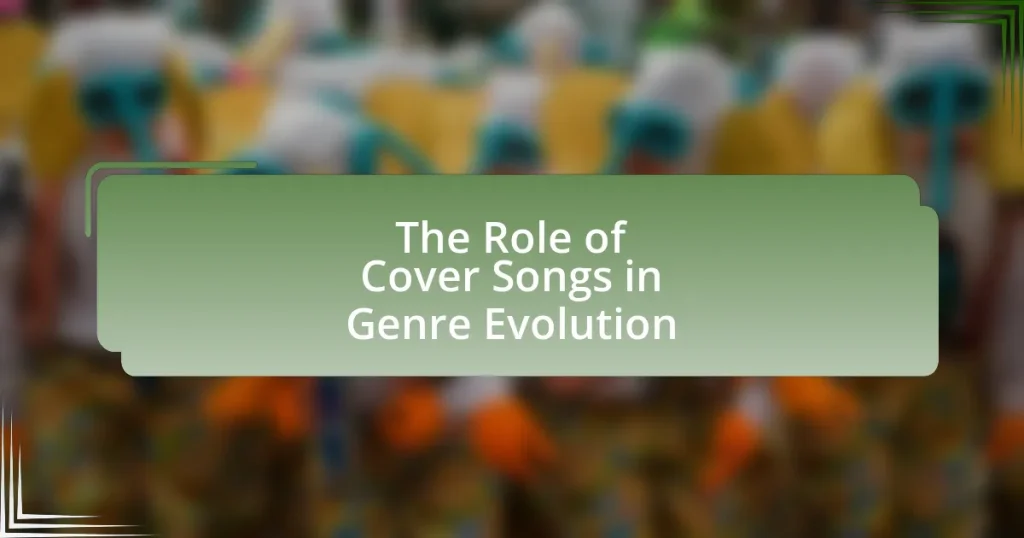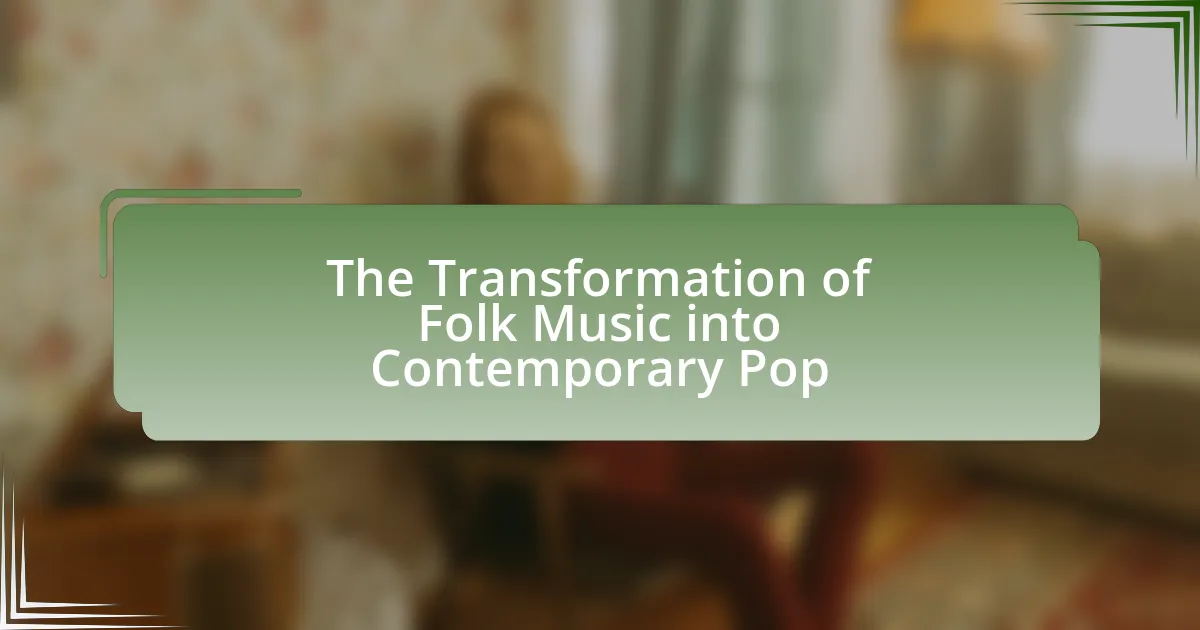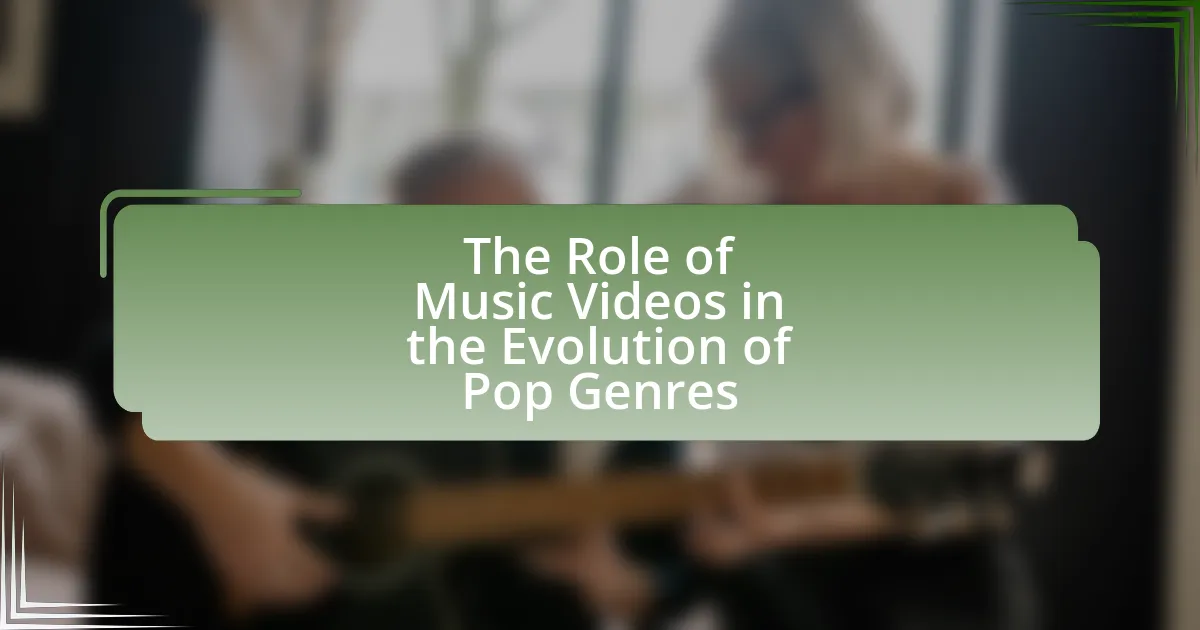Cover songs play a crucial role in the evolution of musical genres by allowing artists to reinterpret and reinvent existing works, leading to the emergence of new subgenres and revitalizing interest in older tracks. They influence musical genres through cross-genre experimentation and collaborations, showcasing how reinterpretations can reshape listener perceptions and expand genre boundaries. Historical examples, such as Whitney Houston’s “I Will Always Love You” and Johnny Cash’s “Hurt,” illustrate the significant impact cover songs have on genre development and cultural shifts. Additionally, cover songs provide economic benefits to artists and labels, enhance visibility for emerging artists, and serve as powerful tools for social and political movements, reflecting contemporary issues and sentiments. However, challenges such as copyright concerns and criticisms regarding originality also accompany the practice of covering songs.
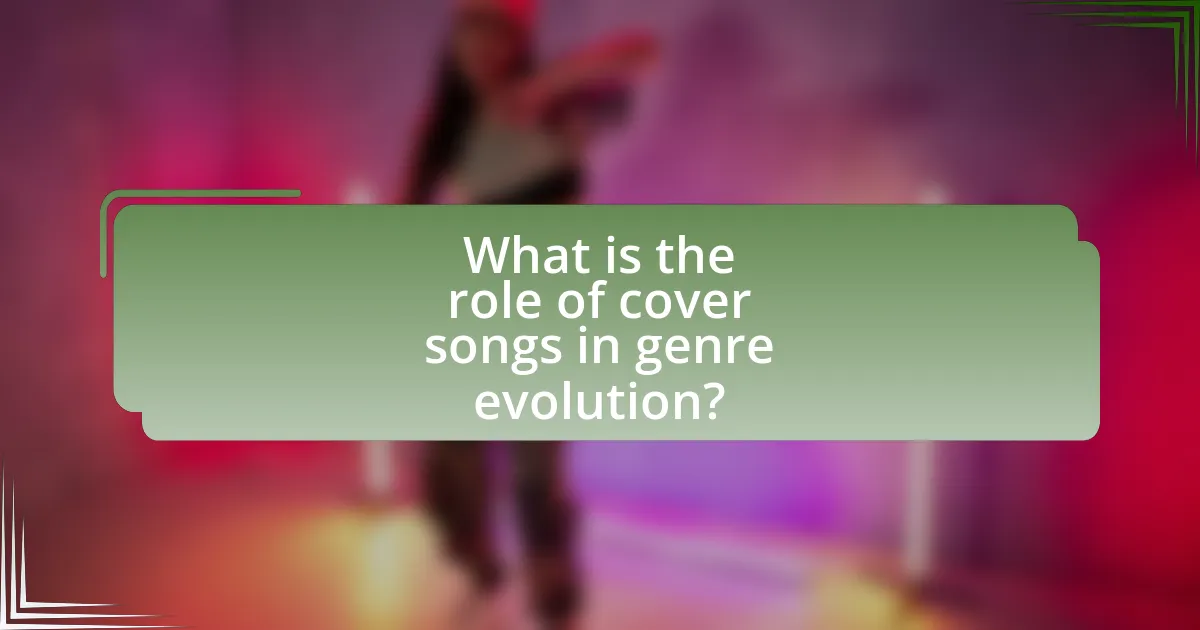
What is the role of cover songs in genre evolution?
Cover songs play a significant role in genre evolution by facilitating the reinterpretation and reinvention of musical styles. They allow artists to pay homage to previous works while infusing their unique perspectives, which can lead to the emergence of new subgenres. For instance, the cover of “Hound Dog” by Elvis Presley transformed the original blues song into a rock and roll classic, illustrating how reinterpretation can shift a song’s genre and influence subsequent artists. Additionally, cover songs often introduce older tracks to new audiences, thereby revitalizing interest in specific genres and contributing to their ongoing evolution.
How do cover songs influence musical genres?
Cover songs influence musical genres by introducing new interpretations and styles that can reshape listener perceptions and expand genre boundaries. For instance, when artists cover songs from different genres, they often infuse their unique sound, which can lead to genre blending; a notable example is Johnny Cash’s cover of Nine Inch Nails’ “Hurt,” which redefined the song’s emotional context and introduced it to a broader audience. This process not only revitalizes older tracks but also encourages cross-genre experimentation, as seen in the rise of pop artists covering rock or country songs, thus fostering genre evolution and innovation.
What are the historical examples of cover songs impacting genre development?
Cover songs have historically played a significant role in genre development, with notable examples including Whitney Houston’s rendition of “I Will Always Love You,” which popularized the ballad genre in the 1990s and introduced it to a new audience, leading to a resurgence in adult contemporary music. Another example is Johnny Cash’s cover of Nine Inch Nails’ “Hurt,” which redefined the song within the country genre, showcasing the emotional depth of country music and bridging the gap between rock and country. Additionally, The Beatles’ covers of songs like “Twist and Shout” helped to propel rock and roll into mainstream culture during the 1960s, influencing countless artists and shaping the sound of popular music. These instances illustrate how cover songs can transform genres by introducing new interpretations and reaching diverse audiences.
How do cover songs introduce new elements to existing genres?
Cover songs introduce new elements to existing genres by reinterpreting original compositions through different musical styles, instrumentation, and vocal techniques. For instance, when a rock band covers a pop song, they may infuse it with heavier guitar riffs and a faster tempo, thereby transforming the song’s genre characteristics. This reinterpretation can attract new audiences and inspire original artists to explore different musical directions. A notable example is Johnny Cash’s cover of Nine Inch Nails’ “Hurt,” which shifted the song’s emotional tone and context, showcasing how a cover can redefine a piece within its genre. Such transformations highlight the dynamic nature of music genres, demonstrating that cover songs can serve as catalysts for innovation and evolution within the music landscape.
Why are cover songs significant in the music industry?
Cover songs are significant in the music industry because they facilitate genre evolution and introduce new audiences to existing music. By reinterpreting songs, artists can blend different styles, leading to innovative sounds that push musical boundaries. For example, Whitney Houston’s cover of “I Will Always Love You” transformed a country song into a pop and R&B classic, showcasing how covers can reshape a song’s identity and reach. Additionally, cover songs often revive interest in original works, as seen when artists like Johnny Cash covered “Hurt,” which brought renewed attention to Nine Inch Nails’ original version. This dynamic not only enhances the cultural landscape but also contributes to the commercial success of both the original and covered songs.
What economic benefits do cover songs provide to artists and labels?
Cover songs provide significant economic benefits to artists and labels by generating revenue through licensing fees, streaming royalties, and increased exposure. When an artist records a cover song, they can earn money from various sources, including mechanical royalties, which are paid to songwriters and publishers whenever the song is reproduced. According to the U.S. Copyright Office, mechanical royalties for cover songs are typically set at a statutory rate of 9.1 cents per copy sold, which can accumulate substantially with high sales volumes. Additionally, cover songs often attract new listeners, leading to increased sales of the artist’s original music and merchandise, thereby enhancing overall profitability for both the artist and the label. This phenomenon is supported by data from the music industry, which shows that popular cover songs frequently chart alongside original works, amplifying the financial impact on the artists involved.
How do cover songs contribute to an artist’s career trajectory?
Cover songs significantly contribute to an artist’s career trajectory by enhancing their visibility and expanding their audience reach. When artists perform covers of popular songs, they tap into existing fan bases, which can lead to increased streaming, sales, and concert attendance. For instance, when Jeff Buckley covered Leonard Cohen’s “Hallelujah,” it revitalized interest in both artists, leading to Buckley’s rise in popularity and increased sales of his album “Grace.” Additionally, covers can showcase an artist’s versatility and creativity, allowing them to reinterpret songs in unique ways that resonate with listeners, further solidifying their place in the music industry. This strategic use of cover songs has been a common practice among successful artists, illustrating their role as a catalyst for career advancement.
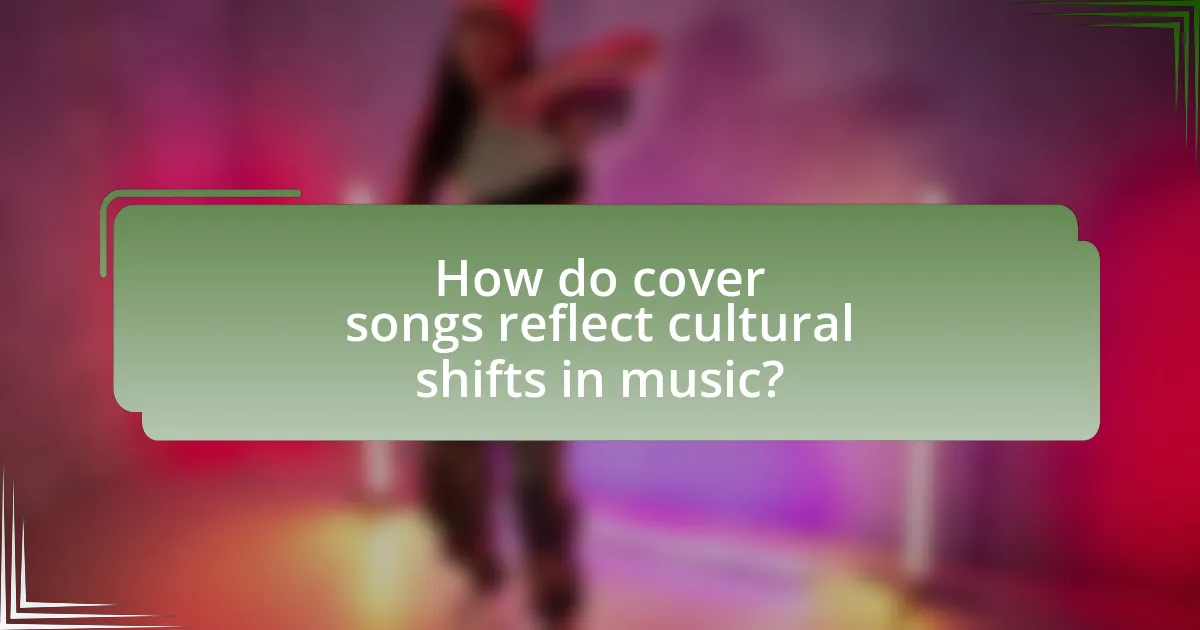
How do cover songs reflect cultural shifts in music?
Cover songs reflect cultural shifts in music by showcasing changing musical tastes, societal values, and technological advancements. For instance, the resurgence of classic rock covers in the 2000s highlighted a nostalgia for past eras while also integrating modern production techniques, illustrating how artists reinterpret older songs to resonate with contemporary audiences. Additionally, the rise of digital platforms has enabled diverse artists to cover songs across genres, promoting cross-cultural exchange and hybridization, as seen in the popularity of Latin pop covers in mainstream music. This evolution demonstrates how cover songs serve as a mirror to the evolving landscape of cultural identity and musical expression.
What role do cover songs play in social and political movements?
Cover songs serve as powerful tools in social and political movements by reinterpreting existing music to resonate with contemporary issues and sentiments. They allow artists to express solidarity, raise awareness, and mobilize communities around specific causes. For example, the cover of Bob Dylan’s “The Times They Are a-Changin'” by various artists during the civil rights movement highlighted the struggle for equality and justice, reinforcing the message of change. Additionally, covers of protest songs can reach new audiences, amplifying the original message and adapting it to current contexts, as seen with artists like Joan Baez and her renditions of folk songs that became anthems for peace and social justice. This adaptability and relevance of cover songs in addressing pressing social issues demonstrate their significant role in shaping and advancing political discourse.
How have cover songs been used to address social issues?
Cover songs have been used to address social issues by reinterpreting existing music to highlight contemporary struggles and injustices. For instance, artists like Joan Baez and Bob Dylan used their covers during the civil rights movement to amplify messages of equality and justice, making the themes more accessible to a broader audience. Additionally, the cover of “Killing in the Name” by Rage Against the Machine in 2020 reignited discussions on police brutality and systemic racism, demonstrating how familiar melodies can serve as powerful vehicles for social commentary. This practice not only revitalizes the original message but also engages new generations in ongoing social dialogues.
What are some notable cover songs that reflect cultural changes?
Notable cover songs that reflect cultural changes include “I Will Always Love You” by Whitney Houston, originally by Dolly Parton, which transformed from a country ballad to a pop anthem, symbolizing the shift in music genres and audience demographics in the early 1990s. Another example is “Hallelujah” by Jeff Buckley, originally by Leonard Cohen; Buckley’s rendition brought new emotional depth and mainstream attention to the song, reflecting changing attitudes towards spirituality and love in contemporary music. Additionally, “Respect” by Aretha Franklin, originally by Otis Redding, became an anthem for the feminist and civil rights movements in the 1960s, showcasing the intersection of music and social change. These covers illustrate how reinterpretation can resonate with evolving cultural sentiments and societal issues.
How do cover songs facilitate cross-genre collaborations?
Cover songs facilitate cross-genre collaborations by allowing artists to reinterpret existing music in their unique styles, thereby bridging different musical genres. This reinterpretation often introduces new audiences to the original song while showcasing the versatility of the artists involved. For example, when a rock band covers a pop song, they can infuse it with elements of rock, attracting fans from both genres and creating a fusion that highlights the strengths of each style. Additionally, collaborations on cover songs can lead to innovative arrangements and fresh takes on familiar melodies, further promoting genre blending and evolution within the music industry.
What are the benefits of artists covering songs from different genres?
Artists covering songs from different genres enhances musical diversity and fosters cross-genre appreciation. This practice allows artists to reinterpret existing works, introducing them to new audiences and creating fresh perspectives on familiar melodies. For instance, when a pop artist covers a classic rock song, it can attract listeners who may not typically engage with rock music, thereby broadening the fan base for both genres. Additionally, covering songs from various genres can lead to innovative musical experimentation, as artists blend different styles and techniques, contributing to the evolution of music. Historical examples include Johnny Cash’s cover of Nine Inch Nails’ “Hurt,” which redefined the song’s emotional impact and introduced it to a new generation. This cross-pollination of genres not only enriches the artists’ creative expression but also promotes cultural exchange within the music industry.
How do collaborations on cover songs influence genre blending?
Collaborations on cover songs significantly influence genre blending by merging distinct musical styles and cultural elements. When artists from different genres collaborate on a cover, they often reinterpret the original song through their unique musical lens, which can lead to the creation of hybrid genres. For example, the collaboration between Lil Nas X and Billy Ray Cyrus on “Old Town Road” combined country and hip-hop, resulting in a genre-defying hit that topped charts across multiple categories. This blending not only broadens the appeal of the song but also encourages listeners to explore and appreciate diverse musical styles, thereby fostering innovation within the music industry.
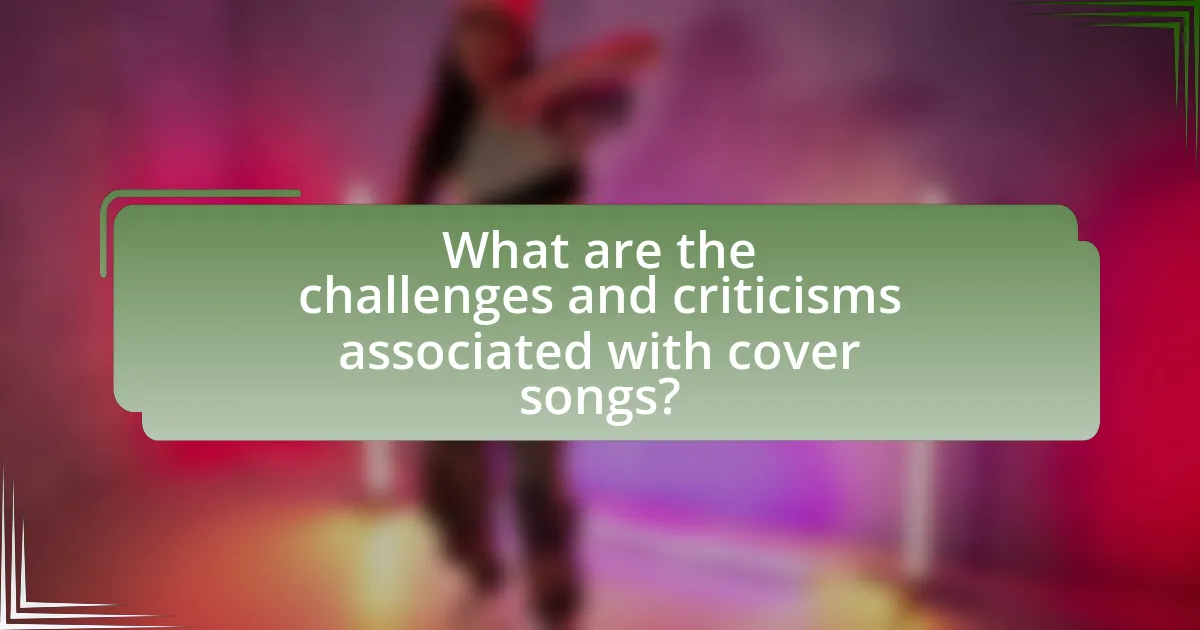
What are the challenges and criticisms associated with cover songs?
Cover songs face several challenges and criticisms, primarily related to originality, artistic integrity, and copyright issues. Critics argue that cover songs can lack the innovation and personal expression found in original works, leading to perceptions of artistic laziness. Additionally, the reliance on established hits can overshadow emerging artists, making it difficult for them to gain recognition. Copyright concerns also arise, as artists must navigate licensing agreements, which can be complex and costly. According to a study by the University of Southern California, approximately 80% of cover songs require licensing, highlighting the financial and legal hurdles involved in producing them.
Why do some artists face backlash for covering songs?
Some artists face backlash for covering songs due to perceived lack of originality and authenticity. When an artist covers a well-known song, fans may feel that the new rendition does not honor the original’s artistic intent or emotional depth, leading to criticism. For example, when artists like Miley Cyrus covered “Jolene,” some fans expressed disappointment, arguing that her version strayed too far from Dolly Parton’s original style and sentiment. Additionally, backlash can arise from cultural appropriation concerns, where artists from one cultural background cover songs from another without proper acknowledgment or respect for the source material, as seen in instances involving pop artists covering traditional or genre-specific songs. This backlash reflects a broader expectation for artists to maintain integrity and respect for the original works they reinterpret.
What are the common criticisms of cover songs in the music community?
Common criticisms of cover songs in the music community include a perceived lack of originality, as many artists are seen as relying on established hits rather than creating new material. Critics argue that this practice can stifle innovation and creativity within the music industry. Additionally, some believe that cover songs can dilute the emotional impact of the original work, as the reinterpretation may not capture the same essence or intent. Furthermore, there is concern that covers can overshadow the original artists, leading to a lack of recognition for their contributions. These criticisms highlight the tension between honoring classic songs and the need for new artistic expression in music.
How do copyright issues affect the production of cover songs?
Copyright issues significantly impact the production of cover songs by requiring artists to obtain licenses before recording or distributing their versions of existing songs. This legal requirement ensures that original songwriters and copyright holders receive compensation for the use of their work, which can influence an artist’s decision to cover a song based on the associated costs and potential legal complexities. For instance, in the United States, the compulsory license system allows cover artists to record a song without permission from the original creator, provided they pay a statutory fee, which is currently set at 9.1 cents per copy for physical and digital sales. This system facilitates the creation of cover songs while also protecting the rights of original creators, thereby shaping the landscape of music production and genre evolution.
What best practices should artists consider when creating cover songs?
Artists should consider obtaining the necessary licenses and permissions when creating cover songs to ensure legal compliance and respect for the original creators. This involves securing a mechanical license, which is required for reproducing and distributing a cover song, as mandated by the U.S. Copyright Office. Additionally, artists should strive to bring their unique interpretation to the cover, which can enhance its appeal and differentiate it from the original. This approach not only showcases the artist’s creativity but also contributes to the evolution of the genre by introducing fresh perspectives. Furthermore, promoting the cover through various platforms can increase visibility and engagement, allowing the artist to reach a broader audience.
How can artists ensure their covers are innovative and respectful?
Artists can ensure their covers are innovative and respectful by incorporating unique interpretations while honoring the original work. This can be achieved through creative arrangements, diverse instrumentation, or altering the genre, which allows for a fresh perspective. Additionally, artists should research the original song’s context and the artist’s intent, ensuring that their rendition does not misrepresent or trivialize the original message. For instance, when covering a song with cultural significance, understanding its background can prevent appropriation and promote appreciation. By balancing originality with respect for the source material, artists contribute positively to genre evolution while maintaining integrity.
What strategies can artists use to promote their cover songs effectively?
Artists can promote their cover songs effectively by leveraging social media platforms, engaging with their audience, and collaborating with other musicians. Social media platforms like Instagram, TikTok, and YouTube allow artists to share their cover songs widely, reaching diverse audiences. Engaging with fans through live performances, Q&A sessions, and behind-the-scenes content fosters a connection that encourages sharing and support. Collaborating with other musicians can enhance visibility, as artists tap into each other’s fan bases, increasing exposure. According to a study by the International Journal of Music Business Research, social media engagement significantly boosts song promotion and audience reach, validating these strategies.
